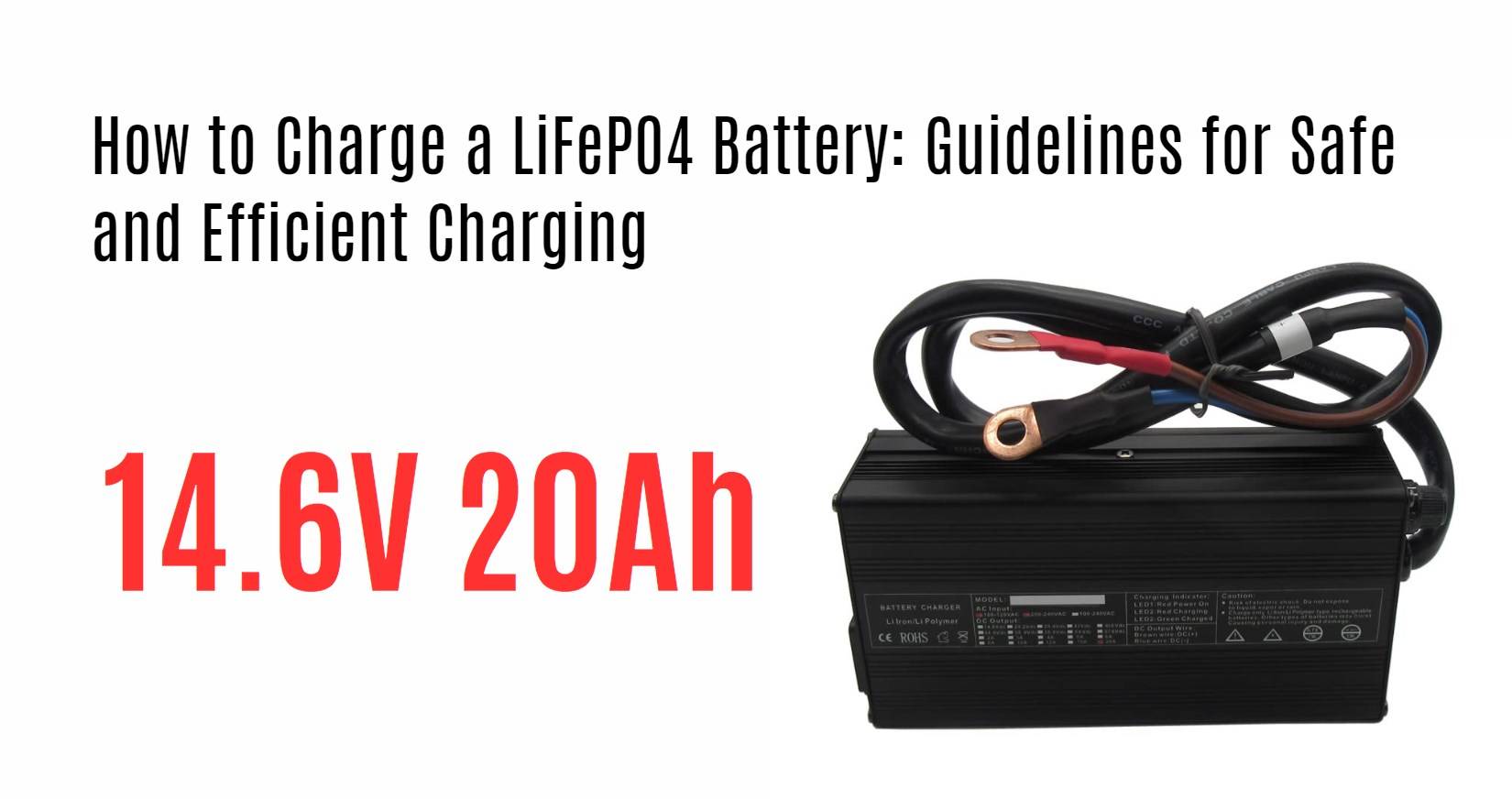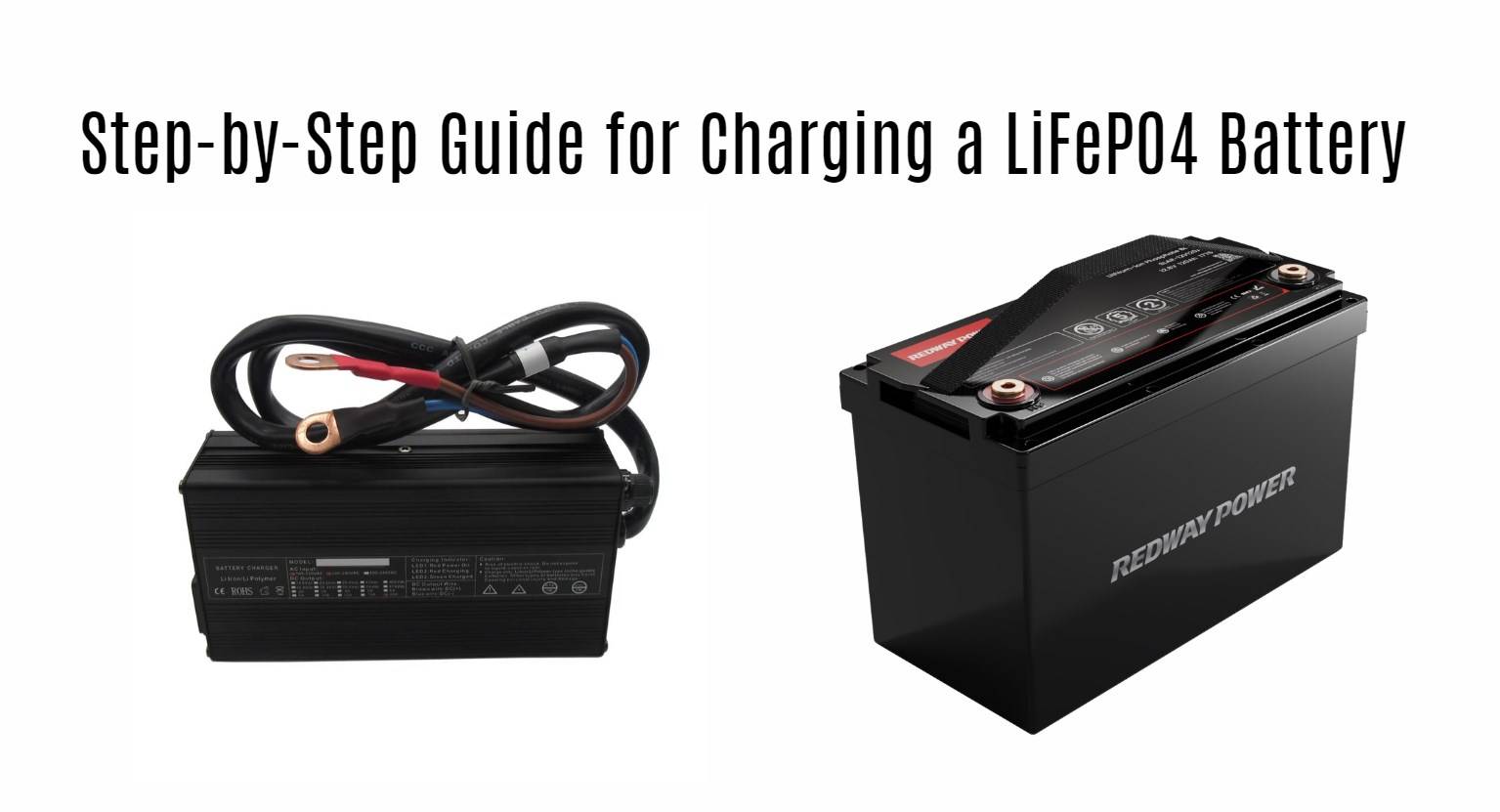To charge a LiFePO4 battery safely and efficiently, use a compatible charger, set the charging parameters as recommended, monitor the process to prevent overcharging, ensure proper ventilation, and disconnect the charger when fully charged.
-
Use a Compatible Charger: It is crucial to use a charger specifically designed for LiFePO4 batteries. This ensures compatibility and prevents any potential issues during the charging process.
-
Set the Charging Parameters: Follow the battery manufacturer’s recommendations and set the charging parameters, such as voltage and current, accordingly. This ensures that the battery is charged within the specified limits for safe and efficient operation.
-
Monitor the Charging Process: Keep a close eye on the charging process to prevent overcharging. Overcharging can lead to reduced battery life and potential safety hazards. Once the battery reaches its recommended charge level, it is important to disconnect the charger promptly.
Table of Contents
ToggleWhat is a LiFePO4 Battery?
A LiFePO4 battery, or lithium iron phosphate battery, is a rechargeable battery that utilizes lithium iron phosphate as the cathode material. It offers high energy density, long cycle life, enhanced safety, and wide temperature range operation. LiFePO4 batteries are widely used in electric vehicles, renewable energy storage, and portable electronics.
-
High Energy Density: LiFePO4 batteries offer high energy density, allowing them to store a significant amount of energy in a compact size. This makes them suitable for applications where space is limited, providing efficient power storage.
-
Long Cycle Life: LiFePO4 batteries have a longer cycle life compared to other battery chemistries. They can endure a higher number of charge-discharge cycles without significant capacity loss, making them durable and cost-effective in the long run.
-
Enhanced Safety: LiFePO4 batteries are known for their excellent safety performance. Their stable chemical structure minimizes the risk of thermal runaway or explosion, ensuring safe operation even in demanding conditions.
-
Wide Temperature Range Operation: LiFePO4 batteries can operate efficiently across a wide temperature range. Whether in hot or cold environments, these batteries maintain their performance and reliability, making them versatile for various applications.
Understanding the Charging Process
The charging process of LiFePO4 batteries involves key elements such as voltage, current, charging stages, and charging time. It is important to ensure that the charging voltage is within the specified range, use a charger with the appropriate charging current, and allow sufficient time for the battery to charge fully.
-
Voltage: LiFePO4 batteries have a specific voltage range for charging. It is important to ensure that the charging voltage falls within this range to prevent overcharging or undercharging, which can impact the battery’s performance and lifespan.
-
Current: The charging current determines how quickly the LiFePO4 battery charges. Using a charger that provides the appropriate charging current is essential to avoid overloading the battery or prolonging the charging time unnecessarily.
-
Charging Stages: LiFePO4 batteries go through different charging stages to optimize the charging process. These stages include bulk charging, absorption charging, and float charging. Each stage has specific voltage and current requirements to ensure efficient and safe charging.
-
Charging Time: The charging time for LiFePO4 batteries depends on various factors, including the battery’s capacity and the charging current. It is important to allow sufficient time for the battery to charge fully without rushing the process, as this can affect the battery’s overall performance and capacity.
Safety Precautions for Charging LiFePO4 Batteries
To charge LiFePO4 batteries safely, use a dedicated LiFePO4 battery charger, ensure proper ventilation, avoid overcharging, and monitor the charging process. Do not charge damaged or swollen batteries. Following these safety precautions is crucial for safe and efficient charging of LiFePO4 batteries.
-
Use a Dedicated Charger: It is crucial to use a LiFePO4 battery charger specifically designed for these batteries. This ensures compatibility and prevents any potential issues that may arise from using chargers meant for other battery chemistries.
-
Ensure Proper Ventilation: During the charging process, LiFePO4 batteries may generate heat. It is important to charge them in well-ventilated areas to dissipate any heat and prevent the accumulation of potentially hazardous gases. Avoid charging in enclosed spaces or near flammable materials.
-
Avoid Overcharging: Overcharging LiFePO4 batteries can lead to reduced battery life and safety hazards. Follow the manufacturer’s recommendations for charging voltage and current to prevent overcharging. Once the battery reaches its recommended charge level, disconnect the charger promptly.
-
Do Not Charge Damaged Batteries: Charging damaged or swollen LiFePO4 batteries is unsafe and can pose a risk of fire or explosion. If a battery shows signs of damage or swelling, discontinue charging and safely dispose of the battery following proper recycling guidelines.
-
Monitor the Charging Process: Regularly monitor the charging process to ensure everything is proceeding as expected. Keep an eye on the battery’s temperature and disconnect the charger once the battery is fully charged to prevent overcharging.
Step-by-Step Guide for Charging a LiFePO4 Battery
Charging a LiFePO4 battery requires a step-by-step approach. Start by using a dedicated LiFePO4 battery charger. Connect the charger securely to the battery and set the charging parameters. Monitor the battery’s temperature and stop charging if it becomes excessively hot or swollen. Once fully charged, disconnect the charger. Follow these steps for safe and efficient charging of LiFePO4 batteries.
-
Use a LiFePO4 Battery Charger: Start by ensuring you have a charger specifically designed for LiFePO4 batteries. Using the correct charger is essential to avoid compatibility issues and ensure safe charging.
-
Connect the Charger: Connect the charger to a power source and then to the LiFePO4 battery. Ensure the connections are secure and properly aligned to establish a reliable charging connection.
-
Set the Charging Parameters: Set the charging parameters on the charger according to the manufacturer’s recommendations. These parameters include the charging voltage and current specific to LiFePO4 batteries.
-
Start the Charging Process: Once the charging parameters are set, start the charging process by turning on the charger. It is important to monitor the charging progress throughout to ensure everything is proceeding as expected.
-
Monitor the Battery: Keep a close eye on the battery’s temperature during the charging process. If the battery becomes excessively hot or shows signs of swelling, it indicates a potential issue. In such cases, immediately stop the charging process to prevent any safety hazards.
-
Complete the Charging: Once the LiFePO4 battery reaches its recommended charge level, disconnect the charger from the power source and then from the battery. This ensures a safe and complete charging process.
Common Mistakes and How to Avoid Them
To avoid common mistakes when charging LiFePO4 batteries, use a dedicated LiFePO4 charger, avoid overcharging, charge within the recommended temperature range, and never charge damaged batteries. Following these precautions ensures safe and optimal charging of LiFePO4 batteries.
-
Using the Wrong Charger: One of the most common mistakes is using a charger meant for a different battery chemistry. This can lead to incorrect charging parameters and potential damage to the LiFePO4 battery. Always use a charger specifically designed for LiFePO4 batteries to ensure safe and efficient charging.
-
Overcharging: Overcharging LiFePO4 batteries can have detrimental effects on their lifespan and safety. It is crucial to follow the manufacturer’s recommendations for charging voltage and current and avoid leaving the battery connected to the charger for an extended period. Monitoring the charging process and disconnecting the charger once the battery is fully charged helps prevent overcharging.
-
Charging in Extreme Temperatures: Charging LiFePO4 batteries in extreme temperatures, whether too hot or too cold, can impact their performance and longevity. It is important to charge the batteries within the recommended temperature range to maintain their optimal functioning.
-
Ignoring Battery Damage: Charging damaged or swollen LiFePO4 batteries is unsafe and can lead to hazardous situations. If you notice any signs of damage or swelling on the battery, it is crucial to discontinue charging and properly dispose of the battery following the appropriate guidelines.
Tips for Maximizing Battery Life
To maximize the lifespan of LiFePO4 batteries, avoid deep discharges, use a dedicated LiFePO4 charger, store at moderate temperatures, and perform balance charging. Following these tips helps extend the life of LiFePO4 batteries and ensures optimal performance.
-
Avoid Deep Discharges: LiFePO4 batteries have a longer lifespan when they are not deeply discharged. Try to avoid discharging the battery below 20% capacity. Deep discharges put excessive strain on the battery cells, reducing their overall longevity.
-
Use the Correct Charger: Always use a LiFePO4 battery charger specifically designed for these batteries. Using the wrong charger can lead to improper charging, which may result in reduced battery life or even damage to the battery.
-
Store at Moderate Temperatures: When LiFePO4 batteries are not in use, it is important to store them in a cool, dry place at moderate temperatures. Extreme heat or cold can negatively impact battery performance and shorten their lifespan.
-
Perform Balance Charging: Periodically perform balance charging on LiFePO4 batteries. Balance charging helps equalize the voltage of individual cells within the battery pack, ensuring balanced performance and prolonging the overall life of the battery.
To maximize the lifespan of LiFePO4 batteries, it is important to avoid deep discharges, use a dedicated LiFePO4 charger, store the batteries at moderate temperatures, and perform balance charging. Following these tips will help extend the life of LiFePO4 batteries, allowing you to enjoy optimal performance and get the most out of your investment.
Conclusion
Charging a LiFePO4 battery requires attention to detail and following safety guidelines. By understanding the charging process, taking necessary precautions, and avoiding common mistakes, you can safely and efficiently charge your LiFePO4 battery. Remember to follow the manufacturer’s recommendations for optimal charging practices to maximize the lifespan of your battery. With these guidelines in mind, you can ensure that your LiFePO4 battery remains reliable and long-lasting for all your power needs.




